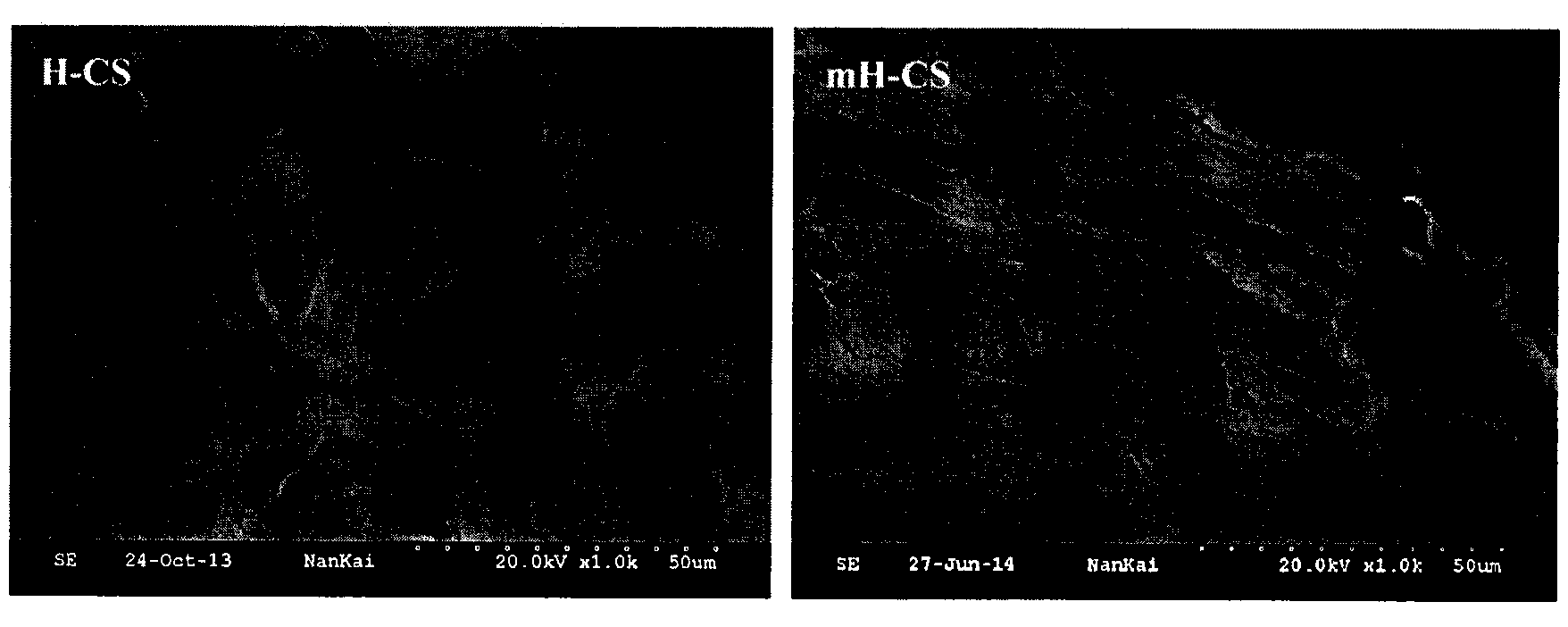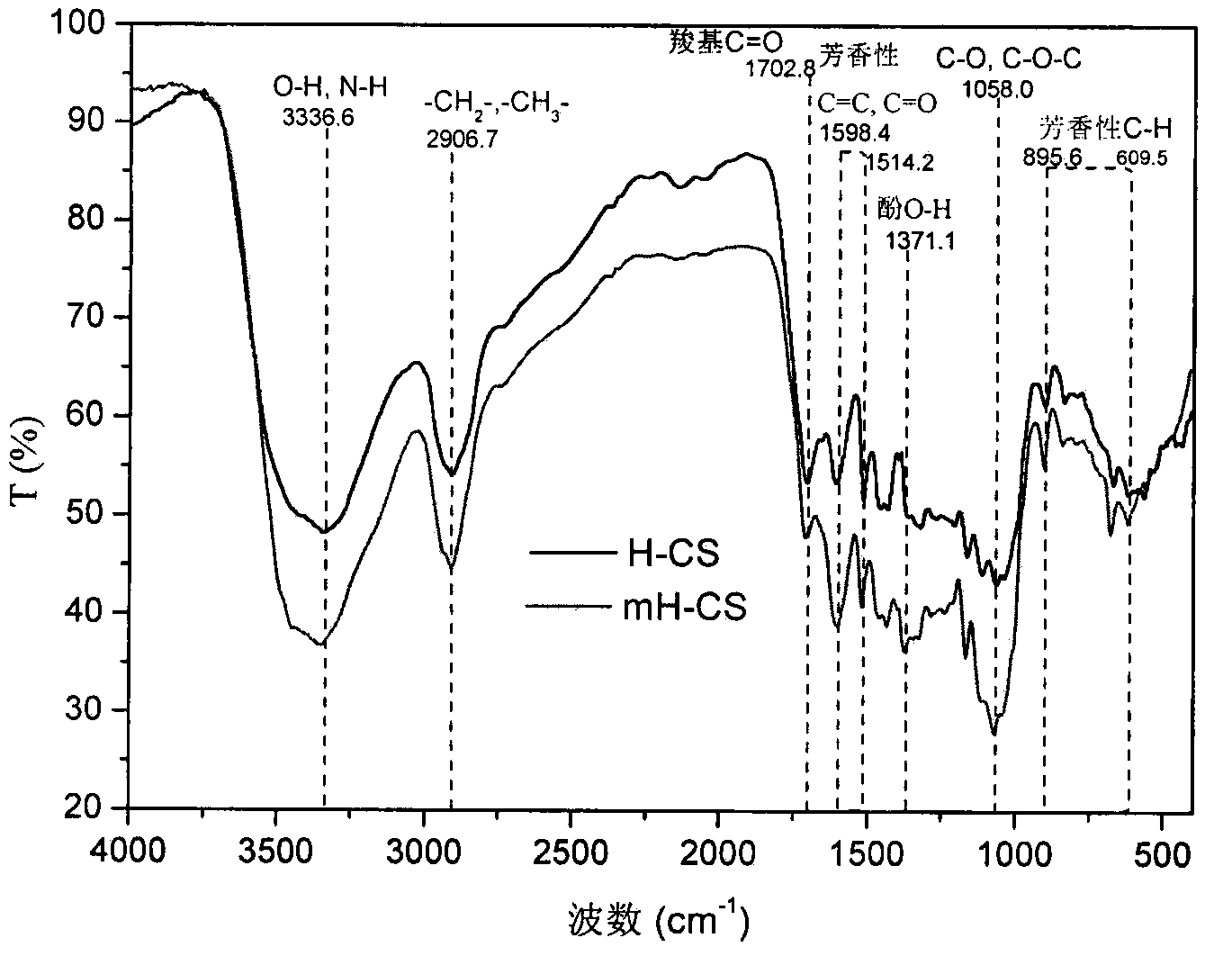Method for preparing modified maize straw hydrothermal charcoal by adopting KOH
A technology of corn stalks and biochar, applied to water pollutants, chemical instruments and methods, adsorption water/sewage treatment, etc., can solve the problems of limited adsorption sites, adsorption performance and stability limitations, etc., to achieve improved adsorption performance, Far-reaching social significance and economic value, the effect of simple preparation method
- Summary
- Abstract
- Description
- Claims
- Application Information
AI Technical Summary
Problems solved by technology
Method used
Image
Examples
Embodiment 1
[0026] The preparation method of corn stalk hydrothermal biochar modified by KOH, the steps are as follows:
[0027] 1) crushing corn stalks (CS) into straw powder, the particle size of which is passed through a 50-mesh sieve;
[0028] 2) Add 5.0g of corn stalk powder and 60mL of distilled water in turn into a 100mL reactor, and seal it;
[0029] 3) Place the reaction kettle in an oven, react at a constant temperature of 200°C for 20 hours, and then cool to room temperature;
[0030] 4) Take out the solid-phase product, wash it with distilled water until neutral, dry it at 105°C and store it in a sealed container to obtain corn stalk hydrothermal biochar (H-CS);
[0031] 5) Mix 2.0 g of corn stalk hydrothermal biochar with 2N KOH solution, stir well for 1 hour, filter, wash with water, and dry to obtain modified corn stalk hydrothermal biochar (mH-CS).
[0032] Such as figure 1 It can be seen that before modification, there are many impurities on the surface of corn straw h...
Embodiment 2
[0038] Weigh 0.06 g of modified corn stalk hydrothermal biochar, add 30 mL of 20 mg / L cadmium solution (containing 0.01 mol / L NaNO 3 As a background solution), adjust the pH of the solution with 0.1mol / L NaOH and nitric acid, place the sample bottle in a shaker at 150r / min, shake at 30°C, take samples at different time periods, filter with a 0.22μm filter membrane, and use Atomic absorption spectrophotometer (AA240FS, VARIAN) was used to measure the concentration of Cd(II) in the filtrate. For the unmodified hydrothermal biochar, the same steps as above were taken for comparison.
[0039] image 3 It shows that before and after the modification of corn straw hydrothermal biochar, the adsorption equilibrium time is the same, but the removal rate of Cd(II) after modification is significantly improved, from 10% of H-CS to 96% of mH-CS, indicating that the modification Hydrothermal biochar has good removal ability for heavy metal cadmium.
Embodiment 3
[0041] Weighed 0.06 g of modified corn stalk hydrothermal biochar, and added 30 mL of cadmium solutions with different concentrations (containing 0.01 mol / L NaNO 3 As a background solution), adjust the pH of the solution with 0.1mol / L NaOH and nitric acid, place the sample bottle in a shaker at 150r / min, shake at 30°C for 24h, take a sample, filter it with a 0.22μm filter membrane, and use atomic absorption spectrophotometry Meter (AA240FS, VARIAN) was used to measure the concentration of Cd(II) in the filtrate. For the unmodified hydrothermal biochar, the same steps as above were taken for comparison.
[0042] Such as Figure 4 As shown, the maximum adsorption capacity of hydrothermal biochar before and after modification was 14.7, 31.2 mg / L, respectively, and the adsorption capacity of modified hydrothermal biochar to Cd(II) was increased by 2 times, indicating that the modified hydrothermal biochar has a strong effect on heavy metals. Cd(II) has good adsorption properties...
PUM
| Property | Measurement | Unit |
|---|---|---|
| adsorption capacity | aaaaa | aaaaa |
Abstract
Description
Claims
Application Information
 Login to View More
Login to View More - R&D
- Intellectual Property
- Life Sciences
- Materials
- Tech Scout
- Unparalleled Data Quality
- Higher Quality Content
- 60% Fewer Hallucinations
Browse by: Latest US Patents, China's latest patents, Technical Efficacy Thesaurus, Application Domain, Technology Topic, Popular Technical Reports.
© 2025 PatSnap. All rights reserved.Legal|Privacy policy|Modern Slavery Act Transparency Statement|Sitemap|About US| Contact US: help@patsnap.com



